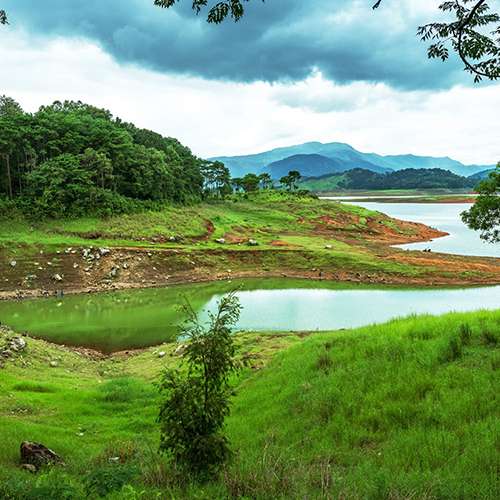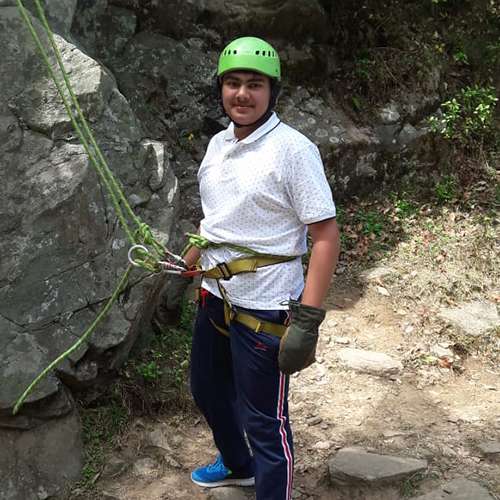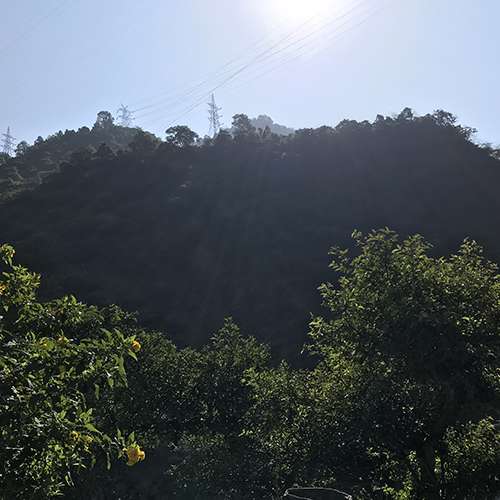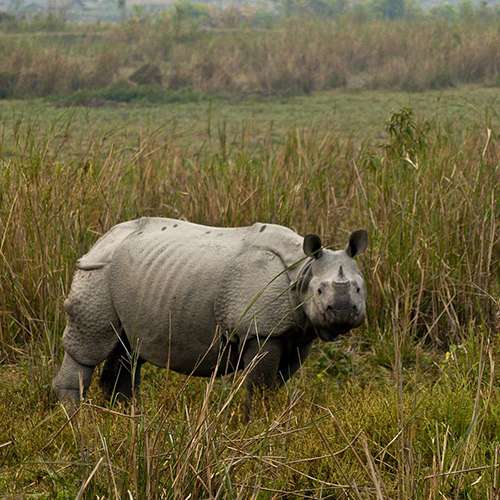Spans an area of 1027.5 square km. Cauvery Wildlife Sanctuary is a protected area derived its name from River Cauvery. Established in 1987 the Sanctuary adjoins in the east with Dharmapuri forest division of Tamil Nadu. The sanctuary has an semi-arid climate, Where the average temperatures are a minimum of 25 °C. The sanctuary is a perfect holiday spot for those who want to take a break from the drab and droll of city life.
The passes through midst of the wildlife sanctuary The river Cauvery houses various species of reptiles like the Mugger Crocodile, Indian mud turtles and various species of snakes. The Wildlife Sanctuary is home to mammals like elephant, wild boar, leopard, spotted deer, barking deer, four-horned antelope, chevrotain, Malabar giant squirrel and grizzled giant squirrel. This place is also popular for masher fish, a rare species.
The sanctuary consists of dry deciduous forest, southern tropical dry thorn and riverine forest. The main species of trees that can be found in this sanctuary are Terminalia Arjuna and Jambul. Apart from the wildlife this place is a great trekking trail. So the adventurous people can pack their bags and set out on their journeys.
STATE : KARNATAKA
LOCATION : Cauvery Wildlife Sanctuary is located in the Mandya, Chamarajanagar and Ramanagar districts of Karnataka.
LANGUAGE : Kannada, Hindi and English.
WHEN TO VISIT : The most preferable time to visit Cauvery Wildlife Sanctuary is from the months of November to March. During that time the temperate climate would allow you to spend quite some time viewing the graces of Mother Nature.
CLOTHING : Cotton or linen full-sleeve outfits which match with surroundings like dark green, muddy-brown and rocky-grey are the ideal clothing color. Avoid shiny or reflective clothes during safari which may diverts or attracts wild animals & birds’ attention which may become cause them leaving the place.

Nature

Adventure

Wildlife

Flora

Fauna
Cauvery Wildlife Sanctuary is well connected by motorable roads with different places. There are excellent bus services provided by private and State Road Transport Corporation, connecting Cauvery Wildlife Sanctuary.
The most convenient rail-head Bengaluru is 94 km. away from Cauvery Wildlife Sanctuary. The rail-head is well connected by trains with different cities and places in India. From the railway station you can take a taxi or bus to reach Cauvery Wildlife Sanctuary.
Nearest airport Bengaluru is 130 km. away from Cauvery Wildlife Sanctuary. The airport is well connected by flights with different cities and places in India. From the airport, you can get a taxi or bus to reach Cauvery Wildlife Sanctuary.
Best Season / Best Time to Visit Cauvery Wildlife Sanctuary
January
February
March
April
May
June
July
August
September
October
November
December
CLIMATE
OPENING OF SANCTUARY: Cauvery Wildlife Sanctuary is open throughout the year for visitors.
ZONE IN THE PARK : The zones in the Cauvery Wildlife Sanctuary are:
PERMIT : Permits obtain from the concerned park authority before you make entry to the Park. Tourists can obtain day visit permit at entry gate.
ENTRY FEE:
For Indian nationals is Rs. 200 per person and Children (5- 12 yrs) - Rs. 100 for a visit.
For foreign national Rs. 1000 per person for a visit.
ATTRACTIONS : Nature & Wildlife
SAFARI TIMING : Wildlife safari timing in Cauvery Wildlife Sanctuary is just like most parks in the country.
| Opens throughout the year | Safari Timing |
|---|---|
| Monday to Sunday | 06:00 AM - 06:00 PM |
 : The incredible Cauvery is the natural abode of the variant of wild species. Catching the amazing glimpses of the majestic creatures by trekking in the jungle and gives you a closer look to the wild life.
: The incredible Cauvery is the natural abode of the variant of wild species. Catching the amazing glimpses of the majestic creatures by trekking in the jungle and gives you a closer look to the wild life.
TREKS AND TRAILS IN CAUVERY: Cauvery Wildlife Sanctuary is offers unique opportunities for wildlife lover. The only way to enjoy the sanctuary is to trek in the park. The area of the sanctuary as a whole is highly undulating with hills and valleys. You can trek the park with recognized and experienced guides provided by the forest department. Trekking in the jungle will have the opportunity to see the flora and fauna of the sanctuary.